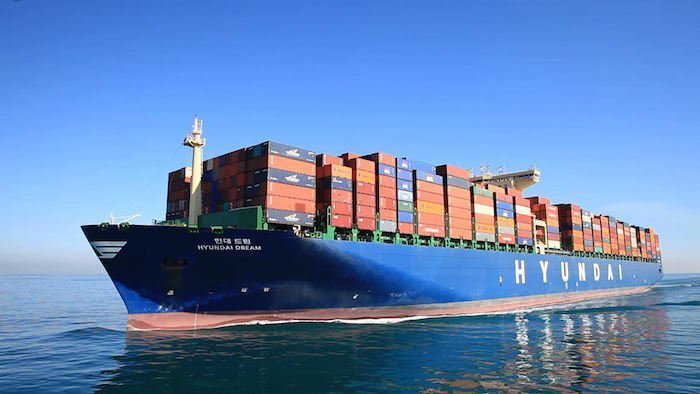Container shipping 2016: holding on for dear life

I don’t know if shipping executives feel envious of Uber, the current darling of the sharing economy. Glorifying articles in the business press, sky high valuations, and an image of slayer of business-as-usual; all of that must be getting some people in shipping to turn green with envy. Oh, and did I mention prospects of spectacular growth in the years ahead?
Is it any wonder that container shipping is now feeling like a rodeo experience: a rider — holding on to a beast equipped with a seemingly bottomless reservoir of energy – trying to spend eight eternally long seconds on top of a determined animal? Buffeted and jolted in every imaginable direction by an uncontrollable hurricane of kicks and buckles, the rider must exercise unyielding focus, balance, and sheer strength not to end up being trampled under the vicious hooves. Every erroneous decision, every unstable shift of balance will result in severe punishment, serious injury, or even death. Or in the case of shipping, ending up somewhere in one of three buckets marked: ‘merge’, ‘acquire/be acquired’, and ‘fold’.
Last year resulted in what has long been gossiped about, but has not been fully baked into the strategy of each company in the industry. The acquisitive mood at CMA CGM swooping on NOL resulted in a new player with much broader coverage and several opportunities to widen the battlefront against the other two companies in the top three and their 2M alliance. The overlap between CMA CGM and NOL is probably not sufficient enough to combine sailings and reorganise capacity. In fact, in this business, tglobal reach and capacity count for a lot, so shrinking of capacity immediately after the acquisition is probably not on the cards.
Of course, the party could not have lasted long. In fact, the move of CMA CGM on NOL only accelerated the ‘merge or be merged’ moment for the Chinese carriers COSCON and CSCL. How they restructure and how effectively they restructure is still an open matter, but their integration reshapes not only China’s shipping, but the whole container shipping industry. Suddenly, the top three of global shipping looks very crowded with four companies vying for attention and respect.
Those two transactions alone contributed to a very unpleasant 2016 start for the Korean, Japanese, and Taiwanese carriers. This is the year of monkey – sociable, selfish and bold. Can the carriers in those three countries pick up the behaviour of the monkey? We are about to see, as Hyundai Merchant Marine (HMM) is about to show us, what it means to be “sociable, selfish and bold”.
There are two upcoming moments of truth for HMM, one in April 2016 and one in July. By those two dates, HMM should pay debts amounting to KRW221bn and KRW299bn respectively. All of that to create some breathing room, while trying to control its debt-to-equity ratio hovering around 800 percent, the most of any lines of that size. It is a miracle that a company can survive that long under such circumstances, but the generosity of lenders seems to have no end.
The disappointing pre-Christmas shipping rush and the Chinese New Year lull created a two-quarter short-term pain, while the deteriorating container shipping business in light of the prolonged global business downturn will keep the shipping companies on the edge for most of 2016. The confirmation could be found in official statistics. Sluggish growth in US imports (0.3% is reported for December 2015), coupled with a strong US dollar hampering US exports, means that US inbound and outbound container volumes will not rapidly increase. In the meantime, sagging Europe’s imports and weak demand for Europe’s exports don’t suggest that Asia-Europe and North America-Europe tradelanes will be busy for the shipping companies. Even if Chinese rate cuts and currency devaluation cheapen Chinese goods, there will be no guarantee that someone will want to buy them and transport overseas. This will be especially true, if the ECB decides to do some rate cutting of their own.
And all that means that HMM is rapidly running out of options. With no buyer on the horizon and no prospect of future funding by its lenders or the Korean government, HMM must act like the 2016 monkey: craftily, powerfully, and in a somewhat rebellious way. The signs of actions so far suggest anything but. The firm’s financial liquidity has worsened, the yield optimisation from container demand is a challenge, and serious network rethinking seems to be off the agenda for now. Jettisoning the bulk cargo shipping business into the arms of Hahn & Co, as reported by some press and industry insiders, could bring a much needed KRW600bn relief, but that will only zero out the debt accounts. There must be clear vision of how to actually start making serious money and put the business on the growth curve, rather than just trying to hold on before the next buckle arrives.
So the question remains, will HMM exercise unyielding focus, balance, and sheer strength not to end up being trampled under the vicious hooves of container shipping reality? Can their eight seconds last for the whole of 2016, or will June 2016 bring a fire sale of the company?
